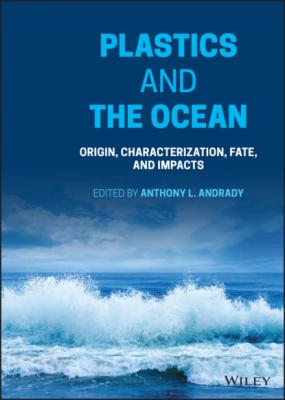Plastics and the Ocean. Группа авторов
Читать онлайн.| Название | Plastics and the Ocean |
|---|---|
| Автор произведения | Группа авторов |
| Жанр | Химия |
| Серия | |
| Издательство | Химия |
| Год выпуска | 0 |
| isbn | 9781119768418 |
The toxicity of many plastic additives has been reviewed previously (Table 2.6). Endocrine disruption is a prominent toxicological mechanism noted in the literature for many plastic additives. Endocrine‐disrupting chemicals (EDCs) are so‐called because they disturb any step in the complex feedback systems of hormones that regulate reproduction, growth, metabolism, and many other biological functions. Mechanisms of toxic action include interfering in the synthesis, activity, or elimination of hormones or their receptors. Phthalates, FRs, antioxidants, monomers, and metal‐based additives are known as EDCs, disrupting a range of different hormonal systems (Table 2.7). The main concern over EDCs is that they act at concentrations much lower than lethal concentrations and results in sublethal effects, such as reduced reproduction or slower growth, both of which could significantly harm populations or communities of marine organisms. For example, thyroid disruption and neurobehavioral effects were observed in crucian carp (Carassius auratus) at concentrations of HBCDs 10–100 times higher than environmental concentrations, leaving only a small margin of safety for wild fish populations (Dong et al. 2018).
Additives can also exert neurological, carcinogenic, developmental, immunotoxic, and organ toxicities. DEHP, for instance, is an animal and human carcinogen (Campanale et al. 2020). Toxicity tests of organophosphorous flame retardants (OPFRs) with mammals, birds, and fish resulted in neurotoxicity, oxidative stress, altered metabolic processes, developmental toxicity, and effects on the liver, kidney, and other organs (Du et al. 2019). Hindered phenolic antioxidants, including 2,6‐di‐tert‐butyl‐4‐methylphenol (BHT) and butylated hydroxyanisole (BHA) and their metabolites, exhibit diverse toxicities, including endocrine disruption, kidney and liver effects, genotoxicity, tumor promotion or enhancement, reproductive effects, and lipid disruption (Liu and Maybury 2020). The diverse toxic effects of priority metals, such as As, Cd, Cr, Pb, and Hg, to multiple organs are well known (Liu et al. 2008).
Table 2.6 Examples of review articles discussing the toxicities of plastic additives.
| Reference | Chemical class | Toxicological effect | Organismal focus for toxicology |
|---|---|---|---|
| Hermabessiere et al. (2017) | Multiple | Multiple | Marine |
| Liu et al. (2020) | Multiple | Ecotox proteomics | Aquatic |
| Pérez‐Albaladejo et al. (2020) | Multiple | Oxidative stress | Human and Aquatic |
| Oehlmann et al. (2009) | Phthalates, bisphenol A | Multiple | Aquatic and terrestrial |
| Staples et al. (1997) | Phthalates | Acute and Chronic | Aquatic |
| Bradlee and Thomas (2003) | Phthalates | Multiple | Aquatic |
| Yost et al. (2019) | Diisobutyl phthalate | Multiple | Human and mammals |
| Weaver et al. (2020) | Diethyl phthalate | Multiple | Human and mammals |
| Caldwell (2012) | De(ethylhexyl) phthalate | Genotoxicity | Human and Rodent |
| Brehm and Flaws (2019) | Phthalates, BPA | Transgenerational | Human |
| Luo et al. (2021) | Phthalate replacements | Multiple | Multiple |
| de Wit (2002) | BFRs (PBDEs, HBCD, TBBPA) | Multiple | Environment |
| Yu et al. (2015) | PBDEs | Thyroid, reproduction | Fish |
| Akortia et al. (2016) | PBDEs | Multiple | Environment |
| Covaci et al. (2006) | HBCD | Multiple | Mammal |
| Koch et al. (2015) | HBCD | Multiple | Mammal, bird, fish |
| Du et al. (2019) | OPFR | Multiple | Mammal, Bird, Fish |
| Liu and Mabury (2020) | Phenolic antioxidants | Multiple | Mammal and aquatic |
| Servos (1999) | Alkylphenols | Multiple (endocrine) | Aquatic |
| Tchounwou et al. (2012) | Metals | Multiple | Environment |
| Canesi and Fabbri (2015) | Bisphenol A | Multiple | Aquatic |
| Bhandari et al. (2015a) | Bisphenol A | Multiple (endocrine) | Aquatic Vertebrates and humans |
| Liu et al. (2021) | Bisphenol A |
|
